Four works from different periods of the great colourist’s career that demonstrate how he saw his models as collaborators who challenged him to attain ever greater heights of creativity
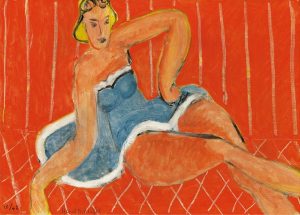
Henri Matisse ‘Danseuse assise sur une table, fond rouge’ 1942. Oil on canvas. 13 × 18⅜ in (33 × 46.5 cm)]
“I depend entirely on my model,” wrote Henri Matisse in 1939. The artist was drawn to powerful women whom he considered his collaborators, challenging and inspiring him to greater heights of creativity. Yet it is fair to say he demanded much of them. As his biographer Hilary Spurling writes, “They had to learn to live with the unbearable tension Matisse generated when working.”
Their reward was to be depicted as sensuous Ottoman odalisques or dancing girls in blazing strokes of red, ultramarine and yellow.
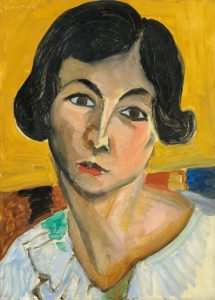
Henri Matisse, ‘Tête de femme penchée (Lorette)’ 1916-1917. Oil on panel. 13 × 9⅜ in (33 × 23.7 cm)
The first was painted in Paris between 1916-1917 and depicts a young, raven-haired woman called Lorette with whom the artist came to be obsessed. At the time of their meeting, Matisse was restless, having reached the limits of his interest in pure abstraction. Lorette reawakened his passion for the female form with her chameleon-like ability to transform her appearance, vacillating between ethereal angel and Dionysian temptress.
“The model must mark you, awaken in you an emotion which you seek in turn to express” — Henri Matisse
According to Spurling, Matisse responded like “a dancer taking to the floor, painting her energetically from odd angles and in strange perspectives”. The picture, ‘Tête de femme penchée (Lorette)’, depicts the model at close range, her sombre, kohl-rimmed eyes confronting the viewer and revealing the force of her personality. Their relationship was a love affair played out on canvas, and it continued until December 1917, when Matisse moved his family to the South of France.
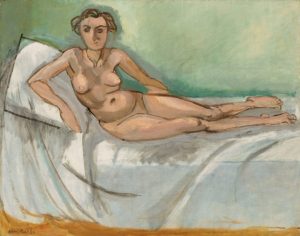
Henri Matisse, ‘Nu demi couché’ circa 1918. Oil on canvas. 29 × 36½ (73.6 × 92.7 cm)
Here he began studying the work of Michelangelo at the local École des arts décoratifs, writing to his friend the Fauve artist Albert Marquet (1885-1955) that he had become “completely ensnared” with the sculptor’s semi-reclining female nude ‘La Notte’. Matisse’s picture ‘Nu demi couché’, arguably captures this obsession. It depicts an unknown woman reclining on a white sheet, cool and austere, her alabaster skin is suggestive of a sculpture.
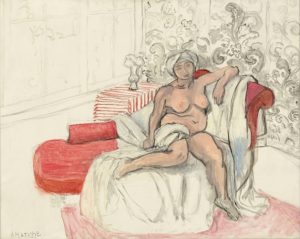
Henri Matisse, ‘Nu sur la chaise longue’ 1920. Oil on canvas. 28¾ × 36¼ (73 × 92.1 cm)
It took a year for Matisse to find a replacement for Lorette, but in Nice he met the teenager Antoinette Arnoud, a shy but self-assured model with an innate sense of style. ‘Nu sur la chaise longue’ was painted in 1920 and depicts the naked Antoinette reclining on a red chaise longue, her hair wrapped in a white turban. Matisse wrote around this time that, “The model must mark you, awaken in you an emotion which you seek in turn to express.”
‘Danseuse assise sur une table, fond rouge’ (pictured top) was painted in 1942 during a critical and highly productive period of the artist’s life. While Matisse was holed up in the former Hôtel Régina in Nice, into his life came the vivacious Italian countess, Carla Avogadro.
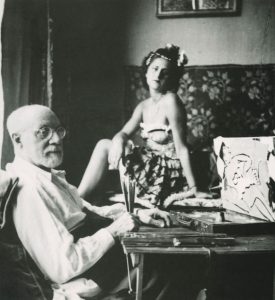
Matisse painting ‘Danseuse assise sur une table, fond rouge’ in his Nice studio, September 1942. His model, Carla Avogadro, is seated in the background. Photograph by André Ostier
The painting that emerged from their collaboration encompassed the artist’s radical experimentations with flattened colour, distortion and bold line. Carla’s body is an arching, serpentine shape, the visual expression of suppleness.
The poet Guillaume Apollinaire once wrote that Matisse’s paintings reminded him of an orange “bursting with light” — this picture is a gloriously vibrant example of that.
Source: Christie’s







